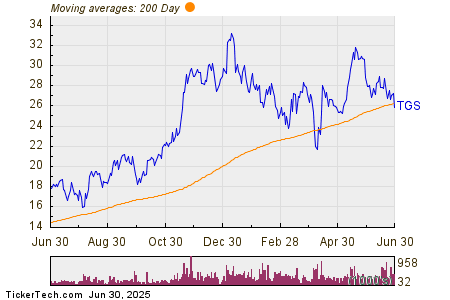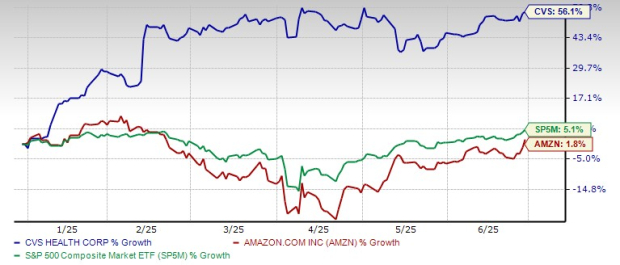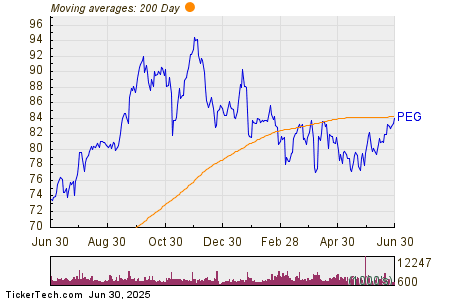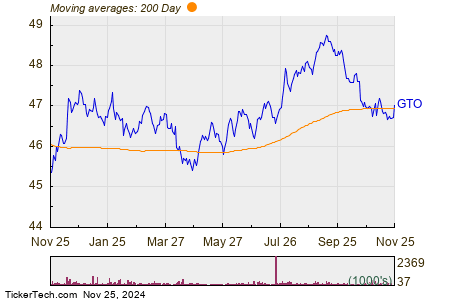Amidst the backdrop of a soaring stock market, numerous companies have fallen into obscurity, presenting investors with a golden opportunity to unearth hidden investment gems buried beneath the financial rubble.
While the S&P 500 revels in its best first-quarter performance since 2019, a significant portion of listed stocks find themselves languishing in the depths of the red, overlooked and undervalued by the investment community. Yet, within this sea of neglected equities lie potential treasures, waiting for savvy investors willing to dive into the unknown and seize these stocks at discounted prices for future profitability.
Currently, a third of stocks on the exchange are swimming against the bullish tide. Many have fallen not due to intrinsic flaws but as victims of temporary setbacks—be it earnings disappointments, bleak guidance, or flagging investor sentiment. The resulting exodus has dragged valuations to bargain levels, harboring the promise of a remarkable resurgence. Here, we unveil the seven most undervalued sleeper stocks deserving consideration in the throes of April 2024.
Tesla (TSLA)

Despite rampant uncertainties, the stock of innovative electric vehicle trailblazer Tesla (NASDAQ:TSLA) has plummeted by 33% this year, currently trading at a humble $165 per share. TSLA’s negative trajectory towards its 52-week low places it as the S&P 500 index’s poorest performer, with a valuation of 38 times forward earnings estimates—its lowest since the pre-Covid era of 2020.
Recent disclosures of declining global sales—evidenced by first-quarter 2024 delivery figures showing a dip of 8.5% year-over-year—have cast a shadow over Tesla’s narrative. Add to that a hefty $1,000 price hike across all its Model Y electric vehicles, a move unlikely to stimulate demand. Yet, the looming question remains: how much lower can TSLA stock plummet before beckoning the bottom fishers to the feast?
United Parcel Service (UPS)

The tumultuous ride of United Parcel Service (NYSE:UPS) shares, down 23% over the past year—6% in 2024—presents a classic buy-the-dip scenario for discerning investors. With UPS trading at a modest 19 times forward earnings and offering a generous quarterly dividend of $1.63 per share—a tantalizing yield of 4.37%—the company is poised for a potential resurgence.
Despite grappling with a post-pandemic shipment downturn, UPS is pivoting towards recovery. A recent coup in clinching the primary air cargo provider position for the U.S. Postal Service from rival Federal Express (NYSE:FDX) is a testament to UPS’s strategic prowess. The lucrative deal, previously monopolized by FedEx for 22 years, stands to inject fresh vigor into UPS’s earnings outlook.
Home Depot (HD)

Home Depot (NYSE:HD), though not a standout performer in recent times, merits a closer inspection from astute investors. With a lackluster 6% gain in the first quarter compared to the benchmark’s 11% surge,
Shifting Winds: An Analysis of Key Market Players
The venerable Home Depot (NYSE: HD) stands as a beacon of promise amid the ebbs and flows of the market. With the economy humming and a tailwind from lower interest rates set to spark housing demand, HD stock beckons investors to ponder a strategic move. Currently, the stock trades at 24 times future earnings forecasts, offering a delicious quarterly dividend of $2.25 per share, translating to a yield of 2.46%.
The Home Depot Story
Recently, Home Depot made headlines by announcing a blockbuster acquisition. The home improvement giant is set to acquire privately owned SRS Distribution for a staggering $18.25 billion. This move underscores Home Depot’s bet on future growth in the professional contractor segment, citing a surge in sales to contractors, roofers, and other home professionals as a key revenue driver. The acquisition of SRS Distribution, slated to conclude by the end of January 2025, marks Home Depot’s largest such move to date, expected to expand its total addressable market by a whopping $50 billion.
Moreover, Home Depot is ramping up its operational footprint by setting up new distribution centers across the U.S. and Canada. These hubs are strategically designed to stock abundant supplies of essential items like lumber and shingles, catering directly to construction sites with swift and seamless material deliveries.
The McDonald’s Muddle
In stark contrast to Home Depot’s bullish stride, the fast-food behemoth McDonald’s (NYSE: MCD) finds itself in a rut. Year-to-date, MCD stock has sunk by 6%, significantly trailing the market’s upward trajectory. The dip primarily arises from concerns over a global sales slowdown and fears that the advent of new weight-loss medications might nudge consumers toward consuming fewer cheeseburgers and fries. Nonetheless, McDonald’s financial results continue to impress, buoyed by robust earnings and the company’s vigorous expansion initiatives and menu diversification efforts.
Despite recent setbacks, McDonald’s unveiled a promising partnership with Krispy Kreme (NASDAQ: DNUT), signaling the integration of these delectable doughnuts into McDonald’s 13,500 outlets nationwide. While this move spurred a notable 20% surge in DNUT stock, the same wave of fortune eludes MCD stock. Additional initiatives, such as plans revealed last December to inaugurate 9,000 new McDonald’s locations globally and enlist 100 million members into its loyalty rewards scheme by 2027, have failed to uplift McDonald’s stock price.
Currently, McDonald’s stock is trading at 24 times future earnings estimates, accompanied by a quarterly dividend of $1.67 per share, holding a yield of 2.40%. Despite its subdued performance, McDonald’s presents itself as a stealthy contender worthy of investor contemplation.
The Adobe Enigma
Shifting gears to the tech realm, Adobe (NASDAQ: ADBE) emerges as a stock weathering a storm. The software stalwart responsible for iconic products like Photoshop and Illustrator has witnessed a stark 14% plummet in its share price this year, placing it among the laggards in the S&P 500 index and the tech sector’s laggards. The downtrend traces back to OpenAI’s introduction of an AI application capable of generating images and videos akin to Adobe’s offerings.
Contrary to prevailing gloom, Adobe’s latest financial report delivered a glimmer of hope. The company outpaced estimates, posting earnings per share (EPS) of $4.48 compared to an anticipated $4.38. Revenue figures stood at $5.18 billion versus an expected $5.14 billion, marking an 11% year-on-year sales uptick.
Additionally, Adobe pivoted away from its slated $20 billion acquisition of design software start-up Figma, a move that had received flak for its steep costs. The company forges ahead with the introduction of innovative AI products, including an assistant tailored for its Reader and Acrobat applications.
Darden Restaurants Ruminations
In the realm of culinary delights, Darden Restaurants (NYSE: DRI) holds court. The hospitality giant, known for its diverse restaurant portfolio, including Olive Garden and LongHorn Steakhouse, has weathered the storm that swept across its industry during the pandemic era.
While facing challenges, Darden Restaurants remains resilient, capitalizing on its robust brand appeal and customer loyalty. The company’s focus on delivering exceptional dining experiences continues to underpin its market positioning despite headwinds in the hospitality sector. Darden’s commitment to culinary excellence and operational efficiency sets a sturdy foundation for future success in the evolving landscape of dining-out preferences.
Unearthing Value: DRI and EBAY Stock Analysis
Investors in DRI might be feeling a bit queasy as the stock showcases a lackluster performance this year, with its share price limping only 2% higher. Against the backdrop of a robust 26% surge in the S&P 500 index, this may seem underwhelming. However, it’s imperative to remember that Darden, the parent company behind household names like Olive Garden and LongHorn Steakhouse, has been navigating choppy waters since the onset of the pandemic.
Darden Restaurants Inc. (DRI)
Following its recent financial report in late March, Darden unveiled a mixed bag of results. Same-store sales saw a slight dip of 1% in the final quarter of 2023 compared to the previous year. Most of the company’s eateries experienced a decline in same-store sales during this period, painting a somber picture. However, a glimmer of hope shines through with the acquisition of Ruth’s Chris Steak House, giving Darden access to 53 new restaurants – a move that is anticipated to boost sales in the coming months.
Despite releasing conservative guidance, Darden could surprise investors with positive results in the remaining months of the year as it continues to rebound from pandemic-induced setbacks.
eBay Inc. (EBAY)
eBay, on the other hand, finds itself basking in newfound glory after years of lackluster performance. The e-commerce giant has seen its stock surge by an impressive 18% since the beginning of the year. Yet, even with this substantial uptick, there still lies an opportunity for investors to snap up shares at a bargain. Currently trading 36% below its peak in 2021, attained during the pandemic-driven market frenzy, eBay stock appears undervalued.
Trading at just nine times its future earnings, eBay offers investors a rare chance to acquire shares in a tech behemoth at a discounted price. Moreover, the company rewards its shareholders with a quarterly dividend of 27 cents per share, yielding 2%.
A spate of positive developments, including an 8% dividend raise and a fresh $2 billion buyback initiative, has injected renewed confidence in eBay’s prospects. These initiatives were coupled with quarterly results that surpassed analysts’ expectations. Furthermore, a recent workforce optimization strategy to downsize by 1,000 full-time positions underscores the company’s commitment to cost control and efficiency.
At the time of publication, Joel Baglole did not hold any positions in the securities discussed in this article. The opinions expressed are solely those of the author and align with the guidelines of InvestorPlace.com.









